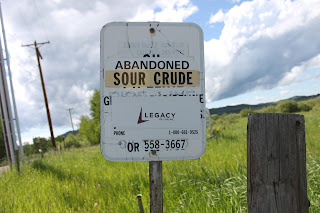Efficient Rail Transport May Make Pipelines Obsolete
B. McPherson
What happens to all the abandoned pipelines?
Oil pipelines have huge direct costs to build, but they also
have many hidden costs. In spite of dire warnings by environmentalist the world
is demanding ever greater supplies of the black gold. For those countries that
have it and market it successfully, money comes rolling in.
But at what cost? An oil pipeline is a hugely complex thing.
Enbridge Corp. has been battling citizens in British Columbia over its proposed
Northern Gateway Pipeline and the Keystone Pipeline in the US has been stalled
for months.
When Big Oil needs to transport oil or bitumen to
refineries, it usually gets a smooth ride to approval. Labelling energy
security as a national priority, property rights are infringed upon. People in
Canada cannot legally stop the installation of a pipeline across their
property. The high pressure conduit is often buried only a few feet below the
surface leaving crops, buildings and livestock vulnerable to a high pressure
soaking should a leak develop.
When a pipeline route crosses delicate environments, it puts
the ecology at extreme risk by disruption of habitat, road building, electrical
lines and of course pollution. The first route proposed for the Keystone
pipeline was across the Nebraska Sandhills, a rare and fragile area where sandy
hills and surface ponds support millions of migratory birds. The ponds are the
surface evidence of the Oglalla Aquifer, a buried lake of fresh water that
serves much of the agricultural needs and city drinking water needs in the
Great Plains.
Pipelines use great quantities of electricity, both to keep
the petroleum heated enough to flow and pumping stations to push it along. In
BC there is a proposal to build a new hydro-electric dam which would be
principally supplying the Northern Gateway project.
Rail companies see the barriers being put in front of new
pipelines and are stepping up and scooping up some of the trade. The CalgaryHerald is running a story about the new oil rush. Because producers receive $20
to $30 more per barrel for oil shipped to refineries by rail, cost differences
are quickly reduced. Rail companies have
been transporting oil in tanker cars for 100 years and because of their special
status don’t require hearings or permission to carry any cargo. Transporting
the sandy bitumen by rail car means that less product is needed to dilute the
sludge, saving more money.
Is this a safer method of moving the millions of gallons of
petroleum than using pipelines? There is the risk of spills at each transfer
point – loading trucks, transferring to rail cars, transferring to refineries.
There is also the risk of spills due to derailments. The shipping of oil
products by individual tanker cars in effect compartmentalizes the oil shipment
and given a serious derailment and failure of some of the tanker cars, damage
is limited. Compare it to the damage that a pipeline left for hours gushing
into a river(Kalamazoo) or the damage that a supertanker ship can do to the
coast if it is holed on the rocks.
We want it, we need it and we’re willing to do just about
anything to get it. Even as we condemn Big Oil, we have to remember without a
market for it there wouldn’t be any Big Oil.


I just hope there is enough oil left for all of us to last our lifetime
ReplyDeleteGood post
Regards
.A-
car shipping
The post is sasying that efficient rail transport may make travelling simpler. Useful information
ReplyDeletesingapore limousine
This comment has been removed by the author.
ReplyDelete